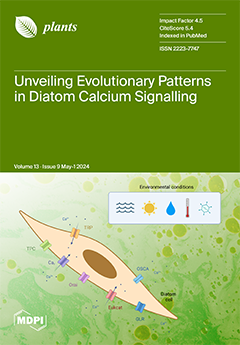This present study investigated the anti-skin-aging properties of
Rosa rugosa. Initially, phenolic compounds were isolated from a hot water extract of
Rosa rugosa’s flower buds. Through repeated chromatography (column chromatography, MPLC, and prep HPLC), we identified nine phenolic compounds (
1
[...] Read more.
This present study investigated the anti-skin-aging properties of
Rosa rugosa. Initially, phenolic compounds were isolated from a hot water extract of
Rosa rugosa’s flower buds. Through repeated chromatography (column chromatography, MPLC, and prep HPLC), we identified nine phenolic compounds (
1–
9), including a previously undescribed depside, rosarugoside D (
1). The chemical structure of 1 was elucidated via NMR, HR-MS, UV, and hydrolysis. Next, in order to identify bioactive compounds that are effective against TNF-α-induced NHDF cells, we measured intracellular ROS production in samples treated with each of the isolated compounds (
1–
9). All isolates reduced the level of ROS at a concentration of 10 μM. Particularly, two depsides—rosarugosides A and D (
2 and
1)—significantly inhibited ROS expression in TNF-α-induced NHDFs compared to the other phenolic compounds. Subsequently, the production of MMP-1 and procollagen type Ι α1 by these two depsides was examined. Remarkably, rosarugoside A (
2) significantly decreased MMP-1 secretion at all concentrations. In contrast, rosarugoside D (
1) regulated the expression of procollagen type Ι α1. These findings collectively suggest that
Rosa rugosa extracts and their isolated compounds, rosarugosides A (
2) and D (
1), hold significant potential for protecting against aging and skin damage. Overall, these findings suggest that
Rosa rugosa extracts and their isolated compounds, rosarugosides A (
2) and D (
1), have the potential to prevent and protect against aging and skin damage, although more specific quantitative analysis is needed.
Full article






